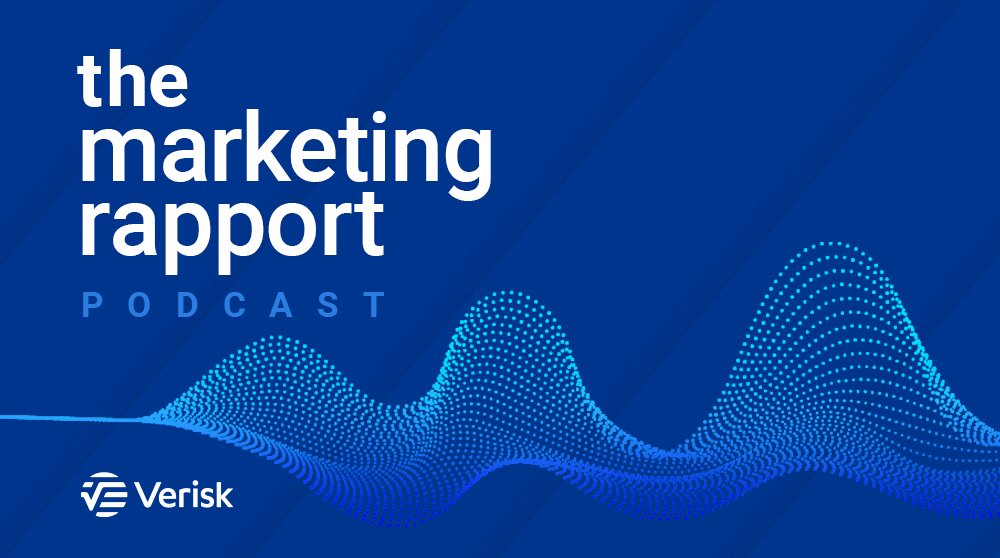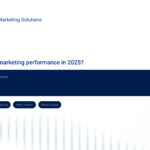How Insights-Driven Insurance Marketers Can Drive Transformation and Gain a Competitive Advantage
Over the past year, Jornaya’s insurance team has participated in a number of insurance industry events and one topic continues to be top of mind for insurance marketers: the transformation of marketing through better real-time data access, analytics and decision-making tools. With the Society of Insurance Research 2017 Annual Conference approaching fast, I wanted to take this opportunity to discuss this topic with some leaders from across the industry.While the insurance industry is continuing to evolve and the volume and type of competitors continues to increase, savvy marketers know that their data is one of their competitive advantages. While emerging carriers have found innovative ways to collect and leverage data, established brands are finding that their larger scale and broader access to data offer a treasure trove of insights about their customers.
In this article, I will share my conversation with three insurance marketing and analytics experts — Karen Imbrogno, MBA, Sr. Insurance Analyst at Acxiom; Sudhama Gopalan, VP of Data Strategy, Analytics & Customer Insights at Fidelity Life/eFinancial; and Kimberly Miller, Direct Marketing Manager at American Family Insurance — in which we explore this topic further.
The insurance industry is currently in the midst of a transformation. How is that impacting insurance marketers?
SUDHAMA GOPALAN:
“To start, insurance marketers are being asked to convert themselves into direct-to-consumer marketers across all channels, especially digital channels. Today, all marketing in such domains is performance-based marketing, which is measurable. The tools available to productively enhance and scale marketing are immense for those who have advanced up the learning curve to combine analytics, predictive modeling, machine learning and work with best-in -breed external partners who are primarily technology leaders in their space.“
KIMBERLY MILLER
“Change is always a constant. You can either make it happen or it happens to you- you make that choice every day. I think from a marketing perspective it’s a matter of being able to understand systems and data, and how they all need to work together with the creative to drive an emotional connection. It takes all of pieces to be successful – we need to have a strong strategy, but just as strong execution.”
KAREN IMBROGNO
“Insurance carriers must rethink products, processes, channels and engagement. Today’s customers are expecting an Amazon-like experience. They expect you to know everything about them when you pick up the phone – who they are; what products they have; whether or not they have a claim in process; and what they should be thinking about next. They want a simplified experience with updates all along the way.So, you can no longer just compare yourself against other carriers in terms of the customer experience. You have to compare yourself against other top brands like Amazon, Uber, Chick-fil-a, Zappos and Apple. That’s what your customers are comparing their experience against.But to be effective, the biggest transformation needs to be a combination of three things: bringing together data; using data to dictate and serve the right message at the right time via the right channel; exceeding customer expectations in everything that you do.”
I find it interesting to see how this transformation is being driven by a mix of both people who have come from outside of the industry and people who have spent their careers within the industry. Can you talk a little about your own career journeys and what brought you to the insurance industry?
Karen Imbrogno
“I am what you call a massive “Insurance Geek”. I love the world of Insurance, particularly P&C and Life. I have spent my entire career in insurance, that’s almost 3 decades.How I ended up in the insurance world is a little crazy. I always heard what a great company Progressive was to work for. After college, I took an entry level job in customer service.Back then, I remember it was paying a little less than $16,000 per year. Doesn’t sound like much. On top of it, I was driving an hour each way. I knew in the end, it would be the most valuable experience I could ever have. After all, you can’t be as effective helping carriers with strategy, if you haven’t been on the end of talking with customers daily and understanding their challenges.I enjoyed that, became passionate about that and the rest is history.”
Kimberly Miller
While I have a degree in marketing, I have always ended up involved in the more technical aspects of marketing. I had some financial service experience and, early on, found myself working in the credit card division of CUNA Inc. supporting credit unions programs and working with Visa and MasterCard. It was very data driven, process driven and regulated. Insurance was a natural progression. I went from marketing to managing claims and really learning underwriting and the vast claim world. Now I see liability everywhere. I‘ve been back in the marketing world for 9 years and really enjoy all the changes and excitement this industry has to offer.”
Sudhama Gopalan
“I am an engineer and scientist who moved from an R&D-manufacturing career into strategy management consulting and then into banking. I have a passion for data-driven businesses and the use of predictive analytics which was honed in consumer financial services, especially credit cards. I used the sale of my employer’s credit card business to search out the next adjacent business where I could apply these skills and experiences. That brought me into the health insurance space first, and now into life insurance, which is seeing a significant change in the innovative use of predictive analytics across the value chain from marketing and distribution to product, risk selection, and underwriting.”
Given the current availability of consumer data, do you think insurance marketers are taking full advantage of all the data that is currently accessible?
Karen Imbrogno
“Not at all. Some do a better job than others, but there is so much data out there and insurance carriers are still very siloed. Data exists in multiple locations and many organizations struggle to get a 360-degree view of each of their customers.”
Kimberly Miller
“It isn’t a simple question to answer. You need to make sure that data can be used for the purpose that you are using it. Compliance and safety are very important. Just because you have the data, doesn’t mean you can use it in the way you may want to. Integrity is very important, not just in terms of data integrity, your own organizational integrity and how you make use of it.”
Sudhama Gopalan
“Other consumer financial services firms, including banks and FinTech firms, may be ahead of insurance marketers in many ways. Within the insurance vertical, P&C insurers may be ahead of others like health and life insurers. In general, businesses which are more direct-to-consumer have more fully taken more advantage of the customer data available given the competitive imperative.”
Karen Imbrogno
“The key to improving engagement is using data to engage at the right moments of time. The only way we can do that and be more effective is by bringing together all of the data that we have about our customers- all online and offline data.We must continuously analyze the data, as well. We need to do a better job using propensities to predict before vs. after. We need to use triggers to ensure that we reach out at the right time. The window is short for shoppers. You can’t afford to wait 5 days to send an email.”
If there was one piece of consumer data that you could access to help influence your marketing programs, what would it be?
Karen Imbrogno
“All the carriers are asking for this. There is so much premium leakage happening. Take for example Uber and Lyft drivers – many of the drivers don’t have the right coverage. I ask often when I get in an UBER car. I cannot tell you the number of times that drivers have told that the just have a regular insurance policy. That’s a scary situation for those riding in the vehicle.”
Sudhama Gopalan
“I would like to be able to find proxies of consumers’ inherent risk using data that I have permissible purpose to access.
Kimberly Miller
“I think the best consumer data that you can get is knowing a consumer’s preference of how and when they want you to interact with them.”
Jaimie Pickles is GM of Insurance at Jornaya.









 Your Privacy Choices for Platform Services | Data Services
Your Privacy Choices for Platform Services | Data Services